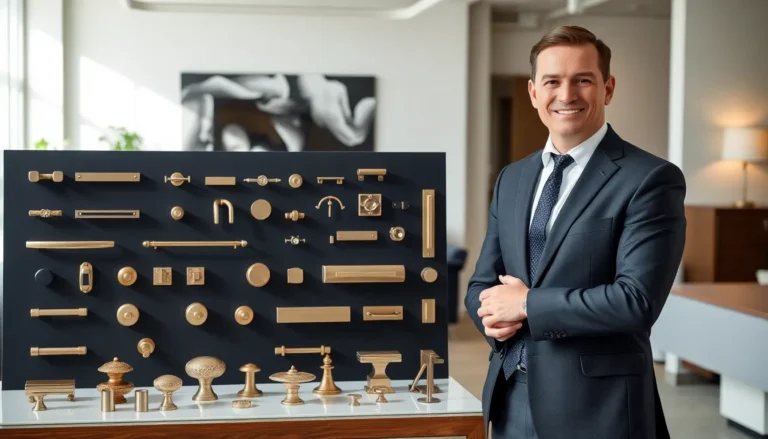Designing mobile apps is like trying to solve a Rubik’s cube while riding a bicycle, complicated but doable. In a landscape where user expectations soar higher than a toddler on a sugar rush, understanding how to design mobile apps can be a game-changer. Whether you’re a seasoned pro or just getting your feet wet, this guide will sprinkle some humor and clarity into your app journey. So, roll up your sleeves and let’s immerse: your app masterpiece awaits.
Understanding User Needs

Before diving headfirst into design, it’s critical to understand what users are really looking for. Ignoring this step is like throwing spaghetti at a wall and hoping something will stick.
Identifying Target Audience
Who are you designing for? This isn’t just about demographics. Consider interests, behaviors, and challenges. Knowing your audience ensures that every feature resonates and adds value. If you’re targeting tech-savvy teens, their needs vastly differ from those of corporate executives, think colors, language, and overall vibe.
Conducting User Research
Now that you know your audience, it’s time to gather insights. Methods such as surveys, focus groups, and interviews can uncover desired features and pain points. Get out there and talk to your potential users: they hold the key to unlock your app’s success. This research forms the backbone of your design process, ensuring your app doesn’t just meet needs but anticipates them.
Creating User Personas
With a firm grasp of user needs, the next phase involves crafting user personas. This is essentially creating fictional individuals representing your target audience.
Defining Core Features
Take a moment to outline essential features based on your user personas. Think of these features as the building blocks of your app. While it’s tempting to include every shiny idea, focus on core functionalities that contribute to a seamless experience. If your app is a shopping platform, features like wish lists and easy checkout will matter more than a built-in cat meme generator (no matter how entertaining.).
Prioritizing Functionality Versus Usability
A critical balance exists between functionality and usability. While adding features might seem appealing, if they complicate user experience, they can be counterproductive. Aim for a design that marries functionality with simplicity: this way, users can enjoy a fast and intuitive experience without feeling overwhelmed.
Crafting a User-Friendly Interface
An engaging user interface (UI) is vital for retaining users and enhancing their experience. Think of it as the storefront to your app: it should be inviting and user-friendly.
Designing Intuitive Navigation
Navigational design should resemble a well-marked trail in the woods, straightforward and easy to follow. Use recognizable icons and labels, ensuring users can find their way without solving a mystery. Intuitive navigation leads to decreased frustration and higher user satisfaction.
Utilizing Visual Hierarchy
Visual hierarchy directs users’ attention to essential elements. Apply contrast, size, and spacing to highlight important features. A well-structured layout guides users naturally, helping them complete tasks without a second thought.
Testing and Iterating Designs
Designing an app is not a one-and-done deal: it requires rigorous testing and iteration. Think of it as a recipe, sometimes, a pinch of salt can make or break the dish.
Conducting Usability Testing
Usability testing allows you to observe real users interacting with your app. This step is crucial for identifying pain points and gathering insights. Whether you do this in-person or remotely, pay attention to where users struggle or succeed. The more data you have, the better your design will become.
Gathering User Feedback
Once testing is complete, collect feedback from users. Are there features they love? Suggestions for alternatives? Use this information to iterate and refine your app. Remember, user feedback is a gold mine that provides actionable insights, leading to a superior design.






